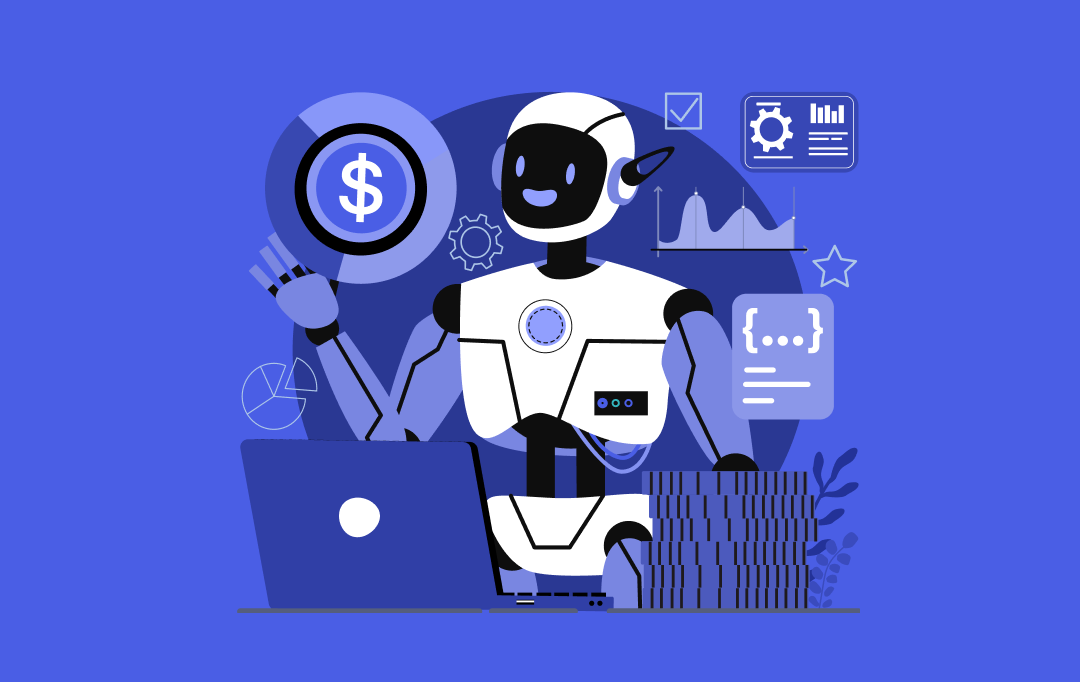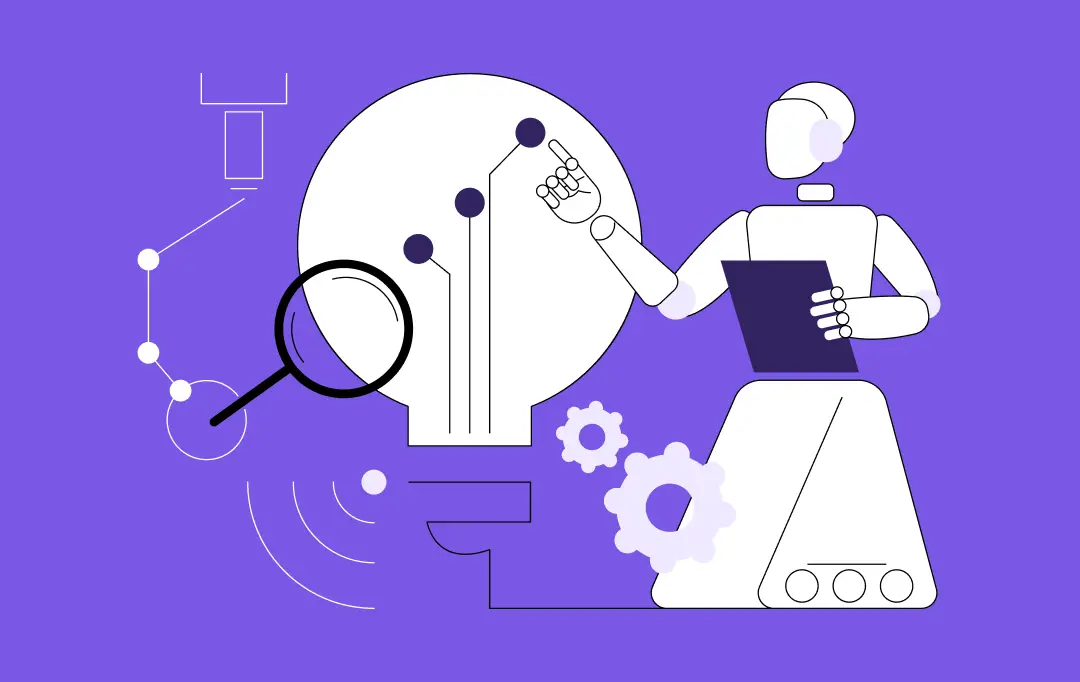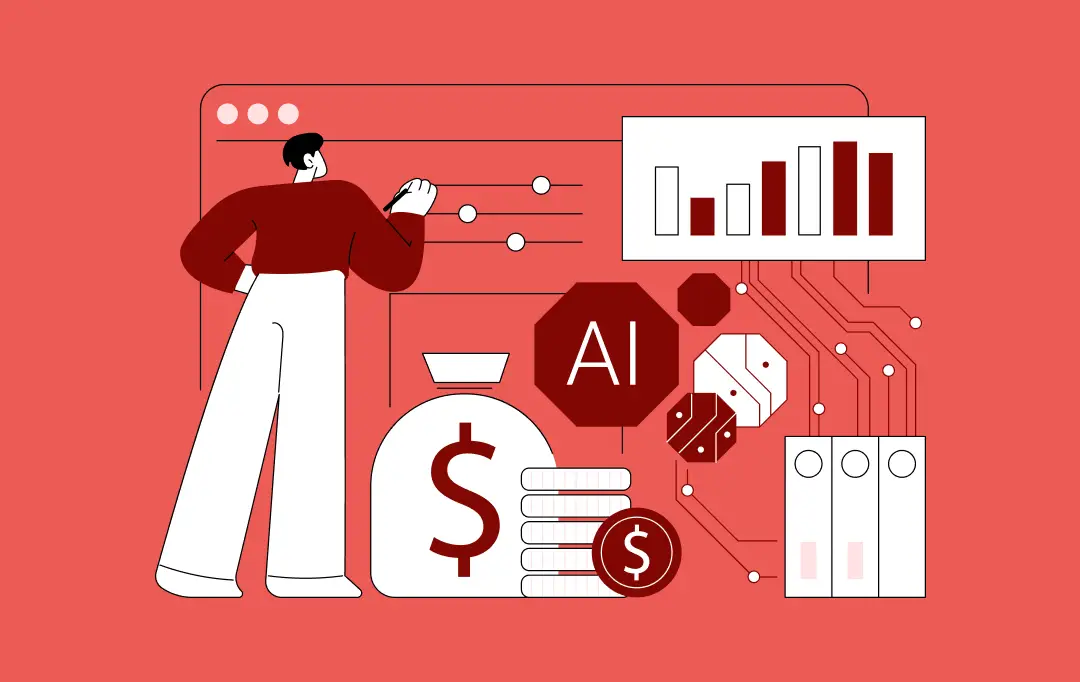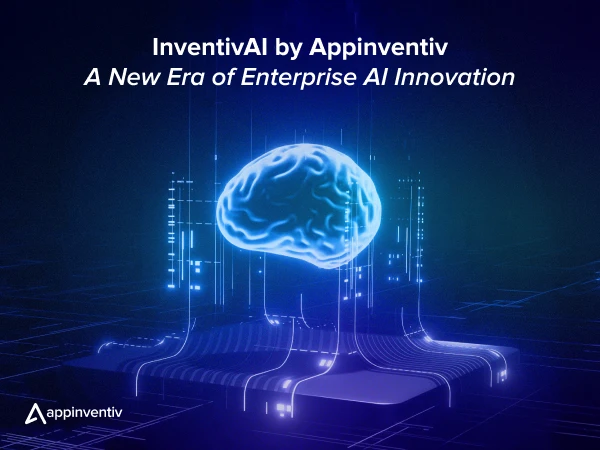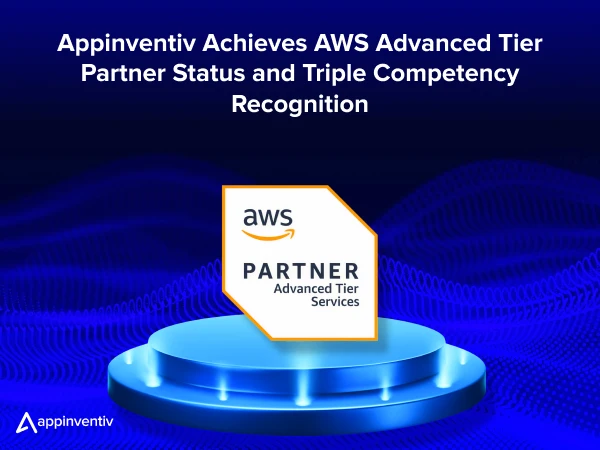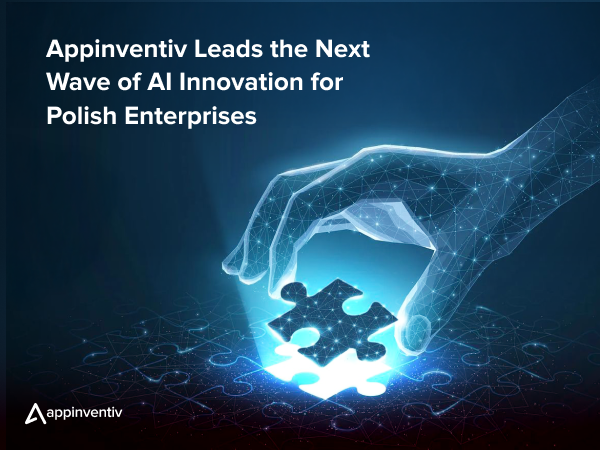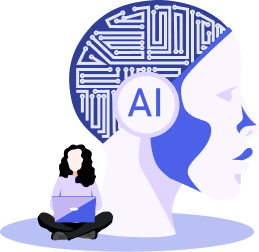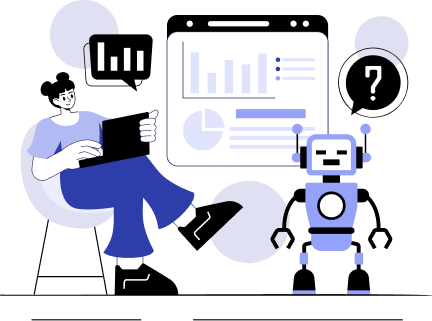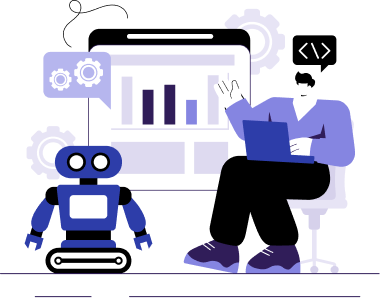- From Predictive to Prescriptive: The Evolution of Enterprise Decision-Making
- Causal AI as the Engine of Strategic Agility
- Insights From Some Real-World Strategic Pivots
- Building Trust and Accountability in Enterprise AI
- Beyond Integration: Orchestrating Gen AI and Causal AI for Strategic Outcomes
- How Hybrid AI is Reshaping Decision-Making: Real-World Frameworks
- Uncovering Hidden Leverage Points: Causal AI in Strategic Resource Allocation
- Enterprise Strategy Reinvented: How Causal AI is Making a Difference
- Operationalizing Causal AI: A Roadmap for Enterprise Leaders
- Future-Proofing the Enterprise: Causal AI and Long-Term Strategic Resilience
- Navigating Uncertainty with Confidence
- Preparing for Evolving Landscapes
- The Path to Adaptive, Learning Organizations
- Transform Your Business Intelligence with Appinventiv's Causal AI Services
- FAQs
Key takeaways:
- Causal AI Uncovers the “Why”: It moves beyond prediction, revealing actionable insights for smarter decisions.
- Hybrid AI Fuels Agility: Combining GenAI’s creativity with Causal AI’s precision enhances strategy and adapts to market shifts.
- Identify True Business Levers: Causal AI reveals real cause-and-effect relationships that drive outcomes.
- Future-Proof Your Business: Model scenarios and adapt proactively, ensuring long-term strategic resilience.
Every day, the pressure mounts. Leaders across every industry are expected to make decisions that aren’t just good, but exceptional—decisions that are rapid, deeply insightful, and completely transparent. Relying on gut feelings or even traditional data analysis simply isn’t enough when the market shifts underfoot and new challenges emerge almost daily.
Standard Artificial Intelligence models, for all their predictive power, often fall short here. They can show us “what” patterns exist or “what” might happen, but they rarely explain the “why” or, more critically, “how to actually change” future outcomes.
That brings us to a crucial point: Causal AI for decision making is the missing link for strategic, future-ready enterprises.
From Predictive to Prescriptive: The Evolution of Enterprise Decision-Making
For years, enterprises have relied heavily on correlational and predictive AI models to forecast trends, identify anomalies, and optimize operations. While incredibly valuable, these models operate primarily on pattern recognition. They excel at identifying relationships between data points, such as “customers who buy A are also likely to buy B.” However, in volatile environments, the inherent shortcomings of purely predictive AI become glaringly apparent.
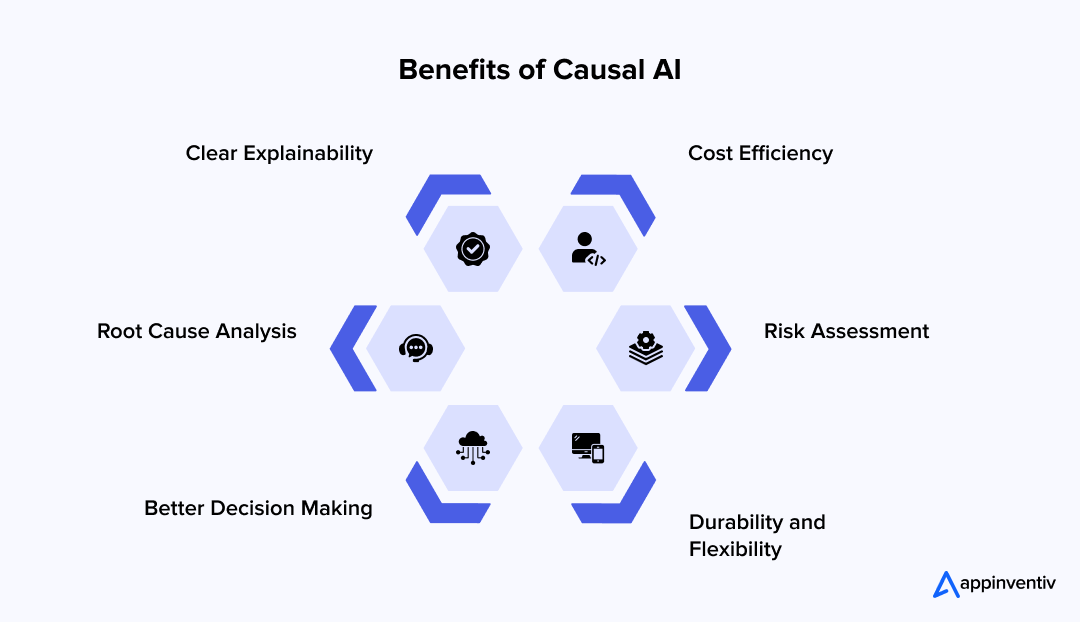
Consider scenarios where a competitor’s sudden market move, an unexpected supply chain disruption, or a shift in consumer behavior renders historical data less relevant. These volatile environments highlight the critical need for advanced decision intelligence use cases. In such situations, purely correlative models can lead to significant missteps. We’ve seen examples across various sectors where:
- According to a USC Annenberg report, AI systems can inherit and even amplify biases present in their training data, resulting in unfair or discriminatory outcomes. This is particularly concerning in areas like hiring, lending, and law enforcement applications.
- Lack of transparency in “black box” algorithms breeds mistrust among stakeholders, making it difficult to justify critical decisions. This is a crucial point that industry leaders acknowledge.
- Vulnerability to data shifts means that models trained on past data may fail spectacularly when underlying relationships change, leading to suboptimal or even detrimental business decisions.
Must Read: Navigating Responsible AI Principles
The business cost of “black box” decisions can be substantial, ranging from missed market opportunities and inefficient resource allocation to brand erosion and regulatory penalties. This underscores a pivotal moment for the future of enterprise decision-making. The strategic leap required now is not merely from pattern recognition to more sophisticated pattern recognition, but from understanding “what” is happening to comprehending “why” it’s happening, and “how” to intervene effectively. This fundamental shift is precisely what advanced decision intelligence technology like Causal AI is designed to enable.
This is where causal AI for decision making truly distinguishes itself. It moves beyond mere association to establish cause-and-effect relationships, enabling a far more proactive and impactful approach to strategy.
As Matheus Facure, author of Causal Inference in Python, observes, “In most situations, businesses don’t care purely about prediction. They care about making decisions that bring more customers, increase conversion, decrease churn, increase profitability, and cut costs.”
This precisely encapsulates the shift from descriptive and predictive analytics to the prescriptive power of causality.
With Causal AI, unlock actionable insights.
Causal AI as the Engine of Strategic Agility
Imagine having the ability to not only predict a potential market downturn but also understand the precise levers that are causing it, and then simulate the exact impact of different interventions. This is the power that causal artificial intelligence brings to the strategic table. It enables:
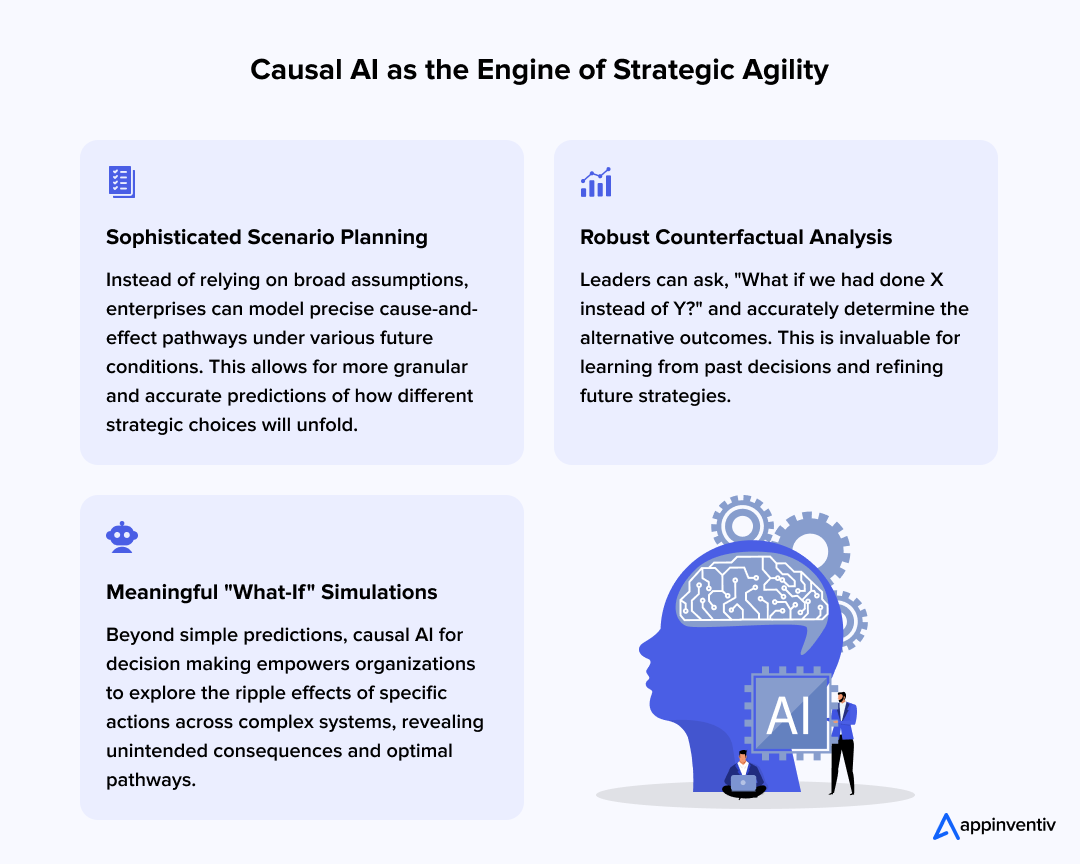
Insights From Some Real-World Strategic Pivots
Let’s look at some real-world strategic pivots enabled by causal AI transforming enterprise strategies:
Supply Chain Resilience: Instead of merely predicting demand fluctuations, a consumer goods company can use causal artificial intelligence to identify the true drivers of disruptions (e.g., specific geopolitical events, raw material shortages in particular regions, or labor strikes) and then simulate the impact of diversifying suppliers or pre-positioning inventory in specific hubs. This shifts the focus from reactive damage control to proactive risk mitigation via AI and resilience building.
For example, in a scenario similar to the Suez Canal blockage, a causal AI model could have quantified the cascading effects of shipping delays on various product lines, allowing for proactive rerouting or inventory adjustments weeks in advance, minimizing losses.
Risk Management in Financial Services: A bank can move beyond identifying high-risk loan applicants to understanding the underlying socio-economic factors that lead to default. By using causal AI, they can design more targeted intervention programs, adjust lending criteria based on actual causal factors, and even influence policy for broader economic stability, rather than just rejecting applications. This allows for fairer and more effective credit assessment, reducing both risk and potential bias.
Product Innovation in Technology: Rather than simply observing correlations between feature usage and churn, a tech company can employ causal AI to uncover the true causal relationships between product features, user behavior, and long-term engagement. This allows for the development of features that genuinely drive value and retention, rather than just adding complexity. For instance, an entertainment streaming platform, instead of just seeing a correlation between certain content types and subscriber retention, could use causal AI to determine why specific content engages viewers, leading to more targeted content acquisition and recommendation strategies.
Netflix, for example, is known for its rigorous testing, with a former senior data scientist, Julie Novak, stating: “It’s not someone going on a hunch thinking: ‘Oh, this sort of marketing or advertising works best.’ Everything is rigorously tested.”
Bonus Read: How to build a video streaming app like Netflix
This emphasis on rigorous testing and understanding “what works” aligns perfectly with the principles of causal inference.
This ability to move from correlation to causation significantly increases decision velocity. It’s no longer about painstakingly analyzing vast datasets for patterns; it’s about rapidly understanding the drivers of change and simulating interventions with precision. This balance of speed and accuracy is a profound competitive advantage in today’s fast-paced environment.
Indeed, according to a McKinsey & Company report, 78% of companies were using AI for at least one business task as of July 2024, a significant increase from 55% in late 2023. This highlights the growing acceptance and reliance on AI making decisions in critical business functions.
Building Trust and Accountability in Enterprise AI
The increasing reliance on AI decision making in strategic functions brings with it a critical boardroom challenge: trust, transparency, and regulatory compliance. As enterprise AI becomes more pervasive, stakeholders demand to understand how these decisions are reached, particularly when they have significant business implications. This is where explainability and auditability transition from mere technical features to strategic assets.
- Explainability as a Strategic Imperative:
Unlike black-box models, causal artificial intelligence inherently provides explanations for its predictions and recommendations. It doesn’t just say “X will happen,” but “X will happen because of Y, and if you change Z, X will be mitigated.” This level of transparency is crucial for gaining buy-in from leadership, operational teams, and even external regulators. Studies indicate that Explainable AI (XAI) can help reduce manual inspection overhead, prevent costly errors, and ensure regulatory compliance. This directly translates into operational efficiency and risk mitigation.
- Auditability for Compliance and Governance:
The ability to trace the causal pathways and understand the underlying logic of an AI making decisions is essential for meeting regulatory requirements and ensuring ethical governance. This transparency is a cornerstone feature of robust decision intelligence technology and particularly vital in heavily regulated industries like finance and healthcare. The incoming EU AI Regulations, for instance, heavily emphasize explainability and accountability, making causal AI a critical technology for compliance.
Furthermore, causal AI plays a vital role in addressing bias. This capability often synergizes with platforms like decision intelligence software that are designed to surface hidden biases. Explicitly modeling cause-and-effect relationships can help identify and mitigate biases embedded in data or algorithms that might otherwise perpetuate unfair or discriminatory outcomes.
For example, if a hiring algorithm consistently disfavors candidates from certain demographics, causal AI can reveal which underlying variables (e.g., specific keywords, educational institutions, or geographical locations) are acting as proxies for protected attributes, allowing for their correction. This commitment to fairness and ethical governance is not just about compliance; it’s about building and maintaining trust with customers, employees, and the broader society. Identifying and mitigating these biases through causal insights are crucial decision intelligence use cases that foster ethical AI deployment.
Must Read: AI TRiSM Framework
Companies using causal AI are 50% more likely to innovate successfully. Tap into data-driven insights to create features that matter.
Beyond Integration: Orchestrating Gen AI and Causal AI for Strategic Outcomes
Many conversations today revolve around integrating various AI technologies. However, for truly differentiated strategic outcomes, the focus needs to shift beyond mere integration to thoughtful orchestration, particularly when combining the power of Generative AI (Gen AI) with causal AI for decision making. While Gen AI excels at rapid content generation, ideation, and synthesis of information, it often lacks the causal understanding required for robust strategic guidance.
Bonus Read: Generative AI for Businesses
Imagine a workflow where:
- Gen AI rapidly sifts through vast amounts of unstructured data – market reports, customer feedback, competitor analyses – to identify emerging trends and generate initial hypotheses about their potential drivers. For instance, a Gen AI model might identify a surge in social media sentiment around “sustainable packaging” and hypothesize a link to increased consumer loyalty.
- This information is then fed into a causal artificial intelligence model, which rigorously tests these hypotheses, establishes the true cause-and-effect relationships, and quantifies their impact. The causal AI might then reveal that while sustainable packaging does increase loyalty, its impact is significantly amplified when coupled with transparent supply chain information, and that without this transparency, the causal link is weak.
- The insights from the causal model then inform Gen AI’s output, enabling it to generate more precise strategic recommendations, detailed scenario plans, or even tailored communication strategies based on a deep understanding of underlying dynamics. In our example, GenAI could then generate a strategic brief emphasizing a joint initiative for sustainable packaging and transparent supply chain communication, rather than just focusing on packaging alone.
This hybrid approach allows enterprises to leverage the speed and creativity of GenAI while grounding their strategic decisions in the rigorous, explainable insights provided by causal AI.
How Hybrid AI is Reshaping Decision-Making: Real-World Frameworks
As organizations increasingly turn to AI for decision-making, hybrid AI models are emerging as a powerful tool for integrating both human expertise and machine intelligence. These real-world strategic frameworks are designed to optimize decision processes by combining the strengths of traditional AI with advanced, adaptable learning systems, ensuring more accurate, efficient, and dynamic outcomes.
- Automated Root Cause Analysis: Gen AI can quickly summarize and categorize symptoms from vast operational logs, while causal AI identifies the fundamental causes, leading to faster problem resolution and more effective preventative measures. For example, in IT operations, Gen AI could flag an unusual pattern of system errors, and causal AI could then pinpoint the specific code deployment or infrastructure change that caused it.
- Hyper-Personalized Strategic Interventions: Combining Gen AI’s ability to craft tailored messages with causal insights into customer behavior allows for highly effective, personalized marketing campaigns or customer engagement strategies that target specific causal levers. This moves beyond simple segmentation to understanding why certain customer segments behave in specific ways and designing interventions that causally influence desired outcomes.
- Accelerated Strategic Foresight: Gen AI can generate diverse future scenarios, and causal AI can then analyze the causal pathways within each scenario, helping leaders identify the most probable outcomes and the key decision points. This allows for a more dynamic and data-driven approach to anticipating future market shifts.
The synergistic power of this orchestration is immense. As Sundar Pichai, CEO of Google, aptly puts it, “The future of AI is not about replacing humans, it’s about augmenting human capabilities.”
This augmentation is precisely what happens when GenAI’s creative speed is combined with Causal AI’s analytical depth, leading to enhanced human strategic intelligence.
Uncovering Hidden Leverage Points: Causal AI in Strategic Resource Allocation
One of the most profound impacts of causal AI lies in its ability to uncover hidden leverage points within an organization. Traditional key performance indicators (KPIs) often show correlations, but they rarely reveal the true drivers of success or failure. By rigorously establishing cause-and-effect relationships, causal AI empowers leaders to:
Identify True Business Levers: Instead of just optimizing metrics that are correlated with success, organizations can identify the specific actions or investments that causally lead to desired outcomes.
For instance, rather than simply seeing a correlation between marketing spend and sales, causal artificial intelligence can pinpoint which specific marketing channels and messaging truly drive customer acquisition and retention. This can lead to significant re-prioritization; for example, discovering that highly personalized email campaigns have a stronger causal impact on repeat purchases than generic billboard advertisements.
Optimize Strategic Resource Allocation: This deep causal understanding enables far more effective investment prioritization. Rather than spreading resources thinly or based on historical allocations, leaders can direct capital and talent to initiatives that have a proven, causal impact on strategic goals. This ensures every dollar and every hour of effort is invested where it will yield the greatest return.
Enhance Risk Mitigation: By understanding the causal factors behind potential risks, organizations can develop more targeted and effective mitigation strategies, allocating resources where they will have the greatest preventative impact. For example, understanding that a specific regulatory change will cause a certain compliance burden, rather than just correlating with it, allows for precise preparation.
Enterprise Strategy Reinvented: How Causal AI is Making a Difference
Marketing ROI: A large e-commerce company used causal AI for decision making to understand the true impact of its diverse marketing campaigns. They discovered that while their broad social media presence correlated with overall brand awareness, a targeted content marketing strategy focused on educational long-form articles had a much stronger causal effect on high-value customer conversions and reduced churn.
This insight led to a significant reallocation of their marketing budget, boosting conversion rates by an average of 15% within six months, as they focused resources on channels with demonstrable causal impact.
Talent Management: A global consulting firm leveraged causal artificial intelligence to understand the true drivers of employee retention and high performance. Initially, they correlated high salaries with retention. However, causal AI revealed that while competitive compensation was a factor, the strongest causal influences on long-term employee satisfaction and productivity were personalized career development paths and flexible work arrangements.
Armed with this knowledge, they redesigned their talent programs, leading to a 10% reduction in voluntary turnover among top performers and a notable increase in project delivery efficiency.
M&A Due Diligence: During a strategic acquisition, an investment firm employed causal AI to analyze the target company’s operational data and financial performance. They were able to identify that a specific, seemingly minor, operational inefficiency in a particular geographical region was a causal factor in significant revenue leakage and customer dissatisfaction for the target. This was not immediately apparent from traditional financial analysis.
This insight allowed them to negotiate a more favorable acquisition price, and upon integration, they prioritized addressing this specific causal bottleneck, leading to a 20% faster realization of synergy benefits than initially projected.
Operationalizing Causal AI: A Roadmap for Enterprise Leaders
Moving from intriguing AI pilots to enterprise-wide, strategy-driven deployment of causal AI for decision making requires a structured roadmap. A common gap in AI adoption is the inability to scale initial successes. To truly embed causal artificial intelligence into the strategic fabric of an organization, consider these critical steps:
Bonus Read: How to Adopt AI in Business
- Data Readiness and Governance
Causal models, while powerful, rely on high-quality, relevant data that can expose causal links. This involves investing in robust data infrastructure, ensuring data lineage, and establishing clear governance frameworks. The focus should be on collecting data that captures potential causal variables, not just outcomes. This often means moving beyond purely observational data to actively designing experiments and collecting interventional data where feasible.
- Cross-Functional Alignment and Collaboration
Causal AI cannot operate in a silo. It requires deep collaboration between data scientists, business domain experts, and strategic leaders. Establishing cross-functional teams dedicated to specific strategic problems can accelerate adoption and ensure relevance. For instance, bringing together marketing specialists with causal AI experts can lead to far more insightful analyses than either team working independently.
- Change Management and Upskilling
Implementing causal AI represents a significant shift in how decisions are made. This necessitates a proactive change management strategy, including training and upskilling programs for decision-makers to understand how to interpret and act upon causal insights. It’s not just about running the models; it’s about fostering a causally aware culture where people habitually ask “why” and “what if we do X.”
- Defining Strategic KPIs for Success
Measuring the “how” of causal AI transforming enterprise strategies goes beyond technical performance metrics. Success should be measured by its contribution to strategic outcomes, such as improved market share, increased profitability, reduced risk exposure, or enhanced customer lifetime value. It’s about demonstrating tangible business value. For instance, rather than just tracking model accuracy, track the reduction in customer churn attributable to causally informed retention strategies.
79% of leaders admit—AI insights without context miss the mark. Combine Gen AI’s creativity with Causal AI’s precision to make decisions that actually stick
Future-Proofing the Enterprise: Causal AI and Long-Term Strategic Resilience
In a world characterized by continuous disruption and radical uncertainty, the ability to future-proof the enterprise is paramount. Causal AI is not just a tool for optimization; it is a foundational capability for building long-term strategic resilience.
Navigating Uncertainty with Confidence
By understanding the causal drivers of various market forces, regulatory changes, or technological shifts, organizations can anticipate potential disruptions and proactively develop adaptive strategies. Causal AI transforming enterprise strategies allows leaders to model the impact of unforeseen events and design robust contingency plans, shifting from reactive crisis management to proactive strategic anticipation. This is particularly relevant given that more than half (54%) of senior business leaders feel unprepared to navigate AI’s rapid advancement.
Preparing for Evolving Landscapes
Whether it’s a new wave of regulations impacting data privacy, the emergence of a disruptive technology (like quantum computing), or a fundamental shift in consumer preferences, causal artificial intelligence can help identify the causal pathways through which these changes will impact the business, enabling timely strategic adjustments. This foresight is crucial in sectors undergoing rapid transformation, allowing organizations to pivot effectively and maintain competitive advantage.
The Path to Adaptive, Learning Organizations
Ultimately, the goal is to cultivate an adaptive, learning organization – one that can continuously sense, interpret, and respond to change with agility and precision. AI making decisions based on causal understanding fosters this continuous learning loop. Every strategic intervention becomes a controlled experiment, providing new data that refines the causal models, leading to increasingly accurate and impactful decisions over time. This creates a virtuous cycle of insight and improvement, making the enterprise inherently more resilient.
As Jeff Bezos, founder of Amazon, remarked, “The pace of progress in artificial intelligence is incredibly fast.” To keep up with this pace, organizations need tools that not only predict but also explain and prescribe, enabling true organizational learning and adaptation.
In essence, causal AI empowers organizations to move beyond simply reacting to symptoms to actively shaping their future. It’s about understanding the deep fabric of cause and effect that drives business outcomes, thereby equipping leaders with the foresight and control needed to navigate tomorrow’s challenges with confidence and conviction.
Transform Your Business Intelligence with Appinventiv’s Causal AI Services
At Appinventiv, we don’t just implement AI—we revolutionize how you understand cause and effect in your business ecosystem. As a globally recognized AI development services company, we specialize in deploying Causal AI solutions that go beyond traditional predictive analytics to help you make informed, strategic decisions based on true causal relationships.
Our comprehensive Causal AI implementation services include:
- Advanced Causal Modeling: We develop sophisticated algorithms that identify genuine cause-and-effect relationships in your data, enabling you to understand not just what happened, but why it happened.
- Strategic Decision Support: Our solutions provide actionable insights that help you predict the outcomes of potential interventions before implementation.
- Custom AI Integration: We seamlessly integrate Causal AI into your existing business processes, ensuring minimal disruption while maximizing impact.
Trusted by Industry Leaders: Our expertise has been recognized by global brands including KFC, Domino’s, Adidas, IKEA, and 6th Street, who have benefited from our tailored software development and AI development services.
Award-Winning Excellence: We were honored with Deloitte Tech Fast 50 Awards (2023 & 2024) and as ‘App Development Company of the Year‘ by Entrepreneur.com. We also maintain ISO 9001:2008 certification, ensuring the highest quality standards in our development processes.
Let us help you unlock the true potential of your data with Causal AI solutions that drive real business transformation. Connect with us!
FAQs
Q. What Is Causal AI?
A. Causal AI is an approach in artificial intelligence that focuses on understanding cause-and-effect relationships in data, rather than just correlations. It uses techniques like causal inference to model how variables influence each other, enabling better decision-making and predictions. Unlike traditional AI, which often relies on pattern recognition, causal AI aims to answer “why” and “what if” questions, making it valuable for applications like policy analysis, healthcare, and business strategy, where understanding causality is critical for accurate outcomes.
Q. What Are the Benefits of Causal AI for Enterprises?
A. Causal AI provides enterprises with significant advantages:
- Better Decision-Making: It uncovers true cause-and-effect relationships, enabling precise actions, like identifying why customer churn occurs.
- Accurate Scenario Analysis: Models “what-if” scenarios for reliable predictions, such as forecasting sales changes from new pricing strategies.
- Efficient Strategies: Pinpoints high-impact interventions, optimizing marketing or operational efforts to save resources.
- Reduced Bias: Avoids misleading correlations, ensuring fairer outcomes in hiring or credit decisions.
- Explainable Results: Offers clear reasoning, enhancing trust and compliance in regulated sectors.
- Adaptability: Maintains accuracy during data shifts, like market changes, ensuring robust performance.
Q. How Does Causal AI Work?
A. Causal AI works by identifying and modeling cause-and-effect relationships in data, rather than relying solely on correlations. It uses causal inference techniques, like directed acyclic graphs (DAGs) or structural equation modeling, to map how variables influence each other. Data is analyzed to distinguish causation from correlation, often using randomized experiments or observational data studies. Algorithms like do-calculus adjust for confounding variables, enabling accurate “what-if” predictions. Machine learning enhances scalability, integrating causal models with large datasets. This allows enterprises to simulate interventions, predict outcomes, and make data-driven decisions with clarity and precision.
Q. What Are the Main Challenges in Implementing Causal AI?
A. The main challenges in implementing causal AI include data quality and availability, as causal relationships require high-quality, well-labeled data. Additionally, the complexity of causal inference models can make them difficult to develop and interpret. Ensuring model transparency and explainability is another hurdle, as businesses need to understand the decisions made by AI. Moreover, integrating causal AI with existing systems and processes often requires significant resources and expertise, making the implementation cost of Causal AI a crucial consideration, and adoption time-consuming and costly.
Q. How Is Causal AI Used in Decision Making?
A. Using Causal AI for decision-making helps organizations understand the cause-and-effect relationships within their data. It enables decision-makers to predict outcomes based on different actions, improving forecasting and strategy. By identifying what drives specific results, causal AI aids in optimizing processes, reducing risks, and prioritizing actions. It is particularly valuable in fields like marketing, healthcare, and finance, where understanding the impact of decisions leads to more accurate, data-driven choices and better resource allocation.
Q. What Are the Benefits of Decision Intelligence Software Platforms?
A. The benefits of decision intelligence software platforms are manifold, including improved decision-making through data-driven insights and predictive analytics. They help organizations optimize processes by providing real-time, actionable insights based on historical and current data. These platforms enhance efficiency by automating complex decision processes and reducing human error. Additionally, they foster better collaboration across departments by integrating data from multiple sources, resulting in more informed, transparent, and strategic decisions that align with organizational goals.
Q. How Much Does It Cost to Implement Causal AI?
A. The cost of implementing causal AI varies depending on factors such as the complexity of the project, data requirements, and the need for specialized expertise. On average, businesses can expect to spend between $50,000 to $300,000 for a full-scale causal AI implementation. This includes costs for data collection, model development, integration with existing systems, and ongoing maintenance. Additional expenses may arise from hiring skilled professionals and ensuring that the AI models comply with industry regulations.
Q. How Is Decision Intelligence Different from Business Intelligence?
A. The question of decision intelligence vs business intelligence is central to understanding the evolution of data-driven strategy. Decision Intelligence (DI) differs from Business Intelligence (BI) by focusing on not just analyzing data, but also improving decision-making processes. While BI provides descriptive insights and reporting, DI goes a step further by using advanced models like AI and machine learning to predict outcomes, recommend actions, and optimize decisions. BI typically informs past trends, while DI enables proactive, data-driven decisions to improve future performance. DI integrates decision-making strategies with data analysis to enhance business outcomes.
Q. Why Is Causal AI Becoming Important for Enterprises?
A. Causal AI is becoming important for enterprises because it helps organizations understand the underlying cause-and-effect relationships within their data. This allows businesses to make more accurate predictions, optimize processes, and improve decision-making by identifying what truly drives specific outcomes. As enterprises focus on data-driven strategies, causal AI empowers them to move beyond correlation-based insights and make proactive, informed decisions that enhance efficiency, reduce risks, and boost overall performance across various sectors like marketing, finance, and operations.


- In just 2 mins you will get a response
- Your idea is 100% protected by our Non Disclosure Agreement.

Why Enterprises Need AI Strategy Consulting in Dubai
Key takeaways: Dubai is moving fast with AI adoption. But many enterprises still struggle to move beyond pilots and achieve real business results. AI strategy consulting gives leaders a clear plan. From use-case selection to data readiness, so enterprise AI initiatives stay on track and within budget. AI consulting in Dubai helps enterprises reduce compliance…
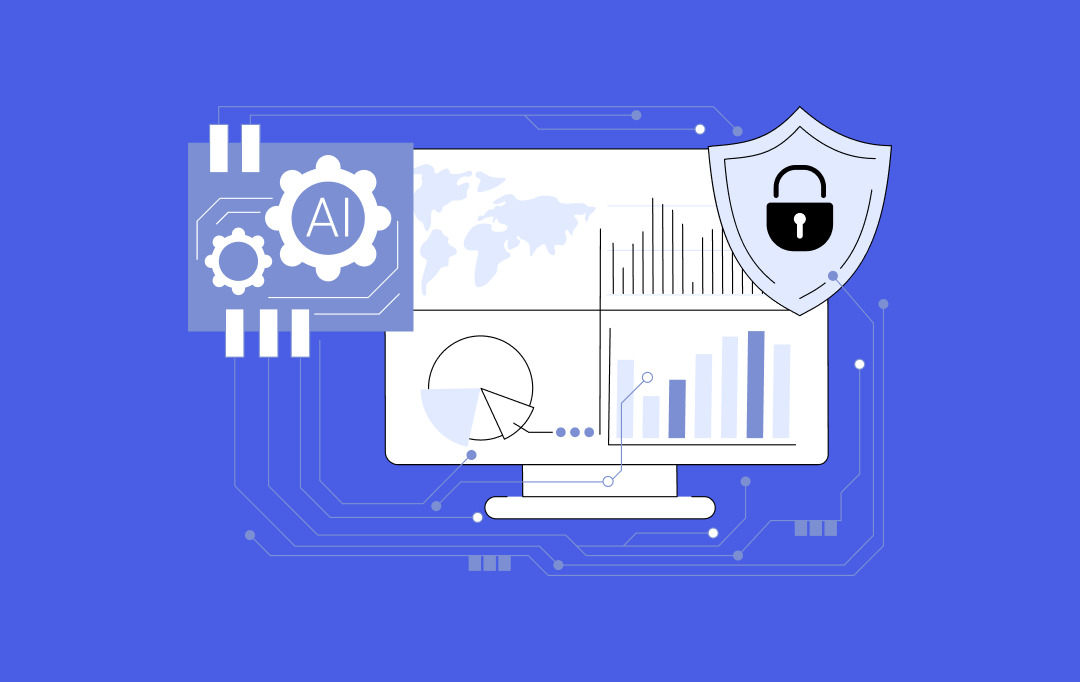
AI Governance Consulting: How to Build Guardrails, Observability, and Responsible AI Pipelines
Key takeaways: Enterprises can no longer rely on principles alone; AI governance must be built into pipelines, model workflows, and decision systems from day one. Strong guardrails across training, inference, retrieval, and agentic actions reduce risks like hallucinations, data leakage, and prompt injection. AI observability is central to governance, giving leaders real-time visibility into drift,…

How to Build a Custom Multilingual Chatbot? Features, Process, Costs
Key takeaways: Multilingual Chatbots Drive Revenue Growth: Companies see higher conversion rates when customers can interact in their native language, with nearly 75% of global customers preferring to buy from websites in their preferred language. Beyond Translation to Cultural Intelligence: Successful implementations require cultural adaptation, not just language translation. Systems must understand context, emotion, and…
